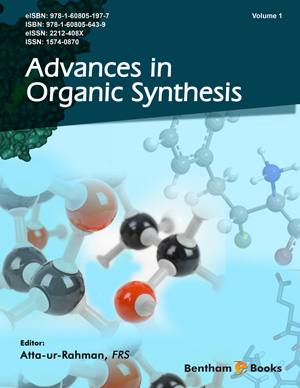Abstract
In the most basic sense, drug design involves designing molecules that are complementary in shape and charge to the biomolecular target with which they interact, and therefore will bind to it. The therapeutic potential of an organic molecule-based chemotherapeutic candidate is influenced by the basic functional groups, where the stereo-arrangement and stereo-selectivity of groups enhance the therapeutic benefits. Stereo-selective organic molecules in different configurations show diverse activity, such as (R) and (S) enantiomers of ibuprofen are effective pain killers but only (S) naproxen has inflammatory activity. Similarly, the transformation of diethyl stilbesterol has potential estrogenic activity and not the cis form. The softness or hardness of drugs depends on the functionality of organic molecules; mostly, the presence of hydroxyl and carboxylic groups improves the softness. This chapter deals with effective drug designing, including the structure-activity relationship and the influence of various functional groups on the activity of a drug compound. The toxicological impact of drugs on the environment has also been explored. In recent times, it has been successfully studied that residue of drugs could enter the ecosystem through the water channel. It directly or indirectly impacts soil, groundwater, and surface water, and creates environmental and health problems.
Keywords: Drug, Environment, Functional group, Organic, Stereochemistry, Therapeutic, Toxicological.






















